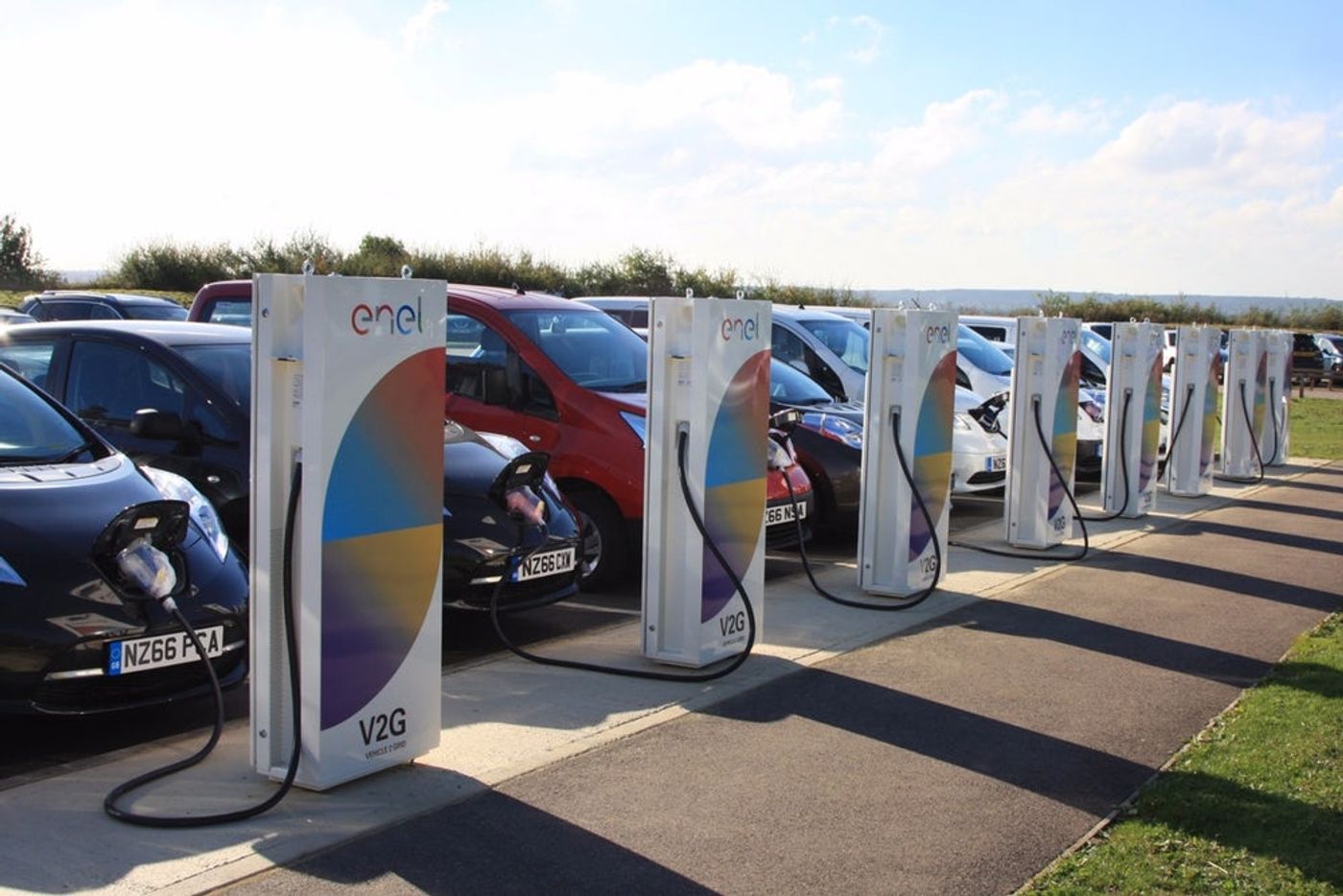Can Electric Cars Power Homes and Stabilize Renewable Energy?
The batteries in electric vehicles can store more energy than most drivers use. Many cars sit idle much of the time and contemporary EVs store enough energy to run an average American home for multiple days. Several companies are exploring how EV electricity storage might be able to connect these cars to local grids, power our homes and support green energy initiatives. The vehicle-to-grid, or V2G, plan is for drivers to charge their cars when there is a power surplus and sell the energy back when there is a power deficit, which might counteract the instability and wasted energy that sometimes characterize renewable sources.
A V2G Pilot
Nuvve Corp., a company in San Diego, is piloting a buy-and-sell EV power program with business customers in Denmark. V2G participants make more than $1,000 per car annually from the exchange, Nuvve CEO Gregory Poilasne told Bloomberg. NUVVE claims its GIVe, or Grid-Integrated-Vehicle, platform is currently the only electric vehicle battery technology that lets any EV battery “generate, store and resell unused energy back to the local electric grid.” Poilasne wrote in 2017 on the Nuvve site:
“The integration of renewable energy sources will only happen if we have enough storage, and the integration of electric vehicles also requires the optimization of energy use. If you combine those two without balancing the grid, there will be a very, very big problem. That’s where V2G comes in. If you mix electric vehicles and renewables while adding V2G, the distribution and transmission of the grid will operate smoothly.”
Nuvve has been running the V2G program since 2016 with Nissan, which sells the most EVs, and multinational Italy-based utility Enel SpA. So far, 10 businesses and 50 vehicles have joined. Company cars are ideal for this type of trial project because they have fairly consistent routes and mileage, which makes managing their energy usage and surplus easier.
V2G Challenges
One of the main challenges to these programs is getting EV owners, carmakers and power companies to collaborate. New multi-industry computing networks would likely have to be created to run this type of cooperation on a large scale. EV drivers will have to trust that they will see a positive return and always have ample power for their own vehicle usage. Companies have to guide and assist car owners in grid monitoring, so that they can charge and sell at the best times.
Nissan also tested a V2G system in 2017 with Tokyo Electric Power Co., using employees from both companies. Participants monitored the grid over the weekend with an app and were rewarded with Amazon shopping points for using power at the right time – when there was a surplus – but only about 10 percent were successful.
EVs are likely to account for more than half of the automobiles on the road by 2040, according to credit rating agency Fitch Ratings. If, as Poilasne and other V2G proponents hope, these cars’ batteries can be integrated with sustainable power sources, vehicle-to-grid systems could potentially revolutionize the international energy landscape.
Sources:









